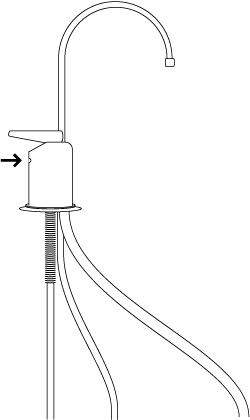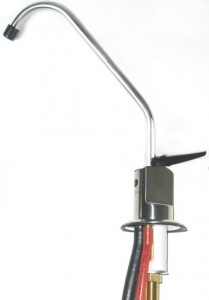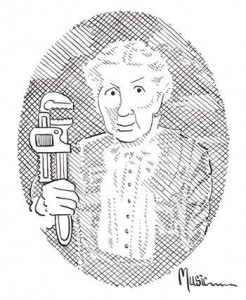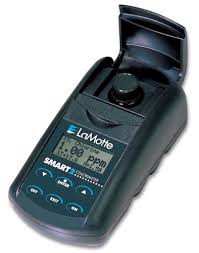Pure Water Occasional, June, 2023
|
Greetings from Pure Water Products, the Pure Water Gazette, and the Pure Water Occasional.
In this Occasional you'll hear about turbidity: what it is and how it is measured, air gap RO faucets and why people often avoid them. Learn about the dangers of half-drunk water bottles, the EPA's controversial new PFAS rule, and the state of America's drinking water. Hear about the dreaded Silent Highwayman, the plague of plastic water bottles, how predatory bacteria could replace chlorine, how humans are altering the tilt of the Earth. And, as always, there is much, much more.
Thank you for reading, and sincere thanks from Pure Water Products for your continuing support. |
|
Thanks for reading!
Please visit the Pure Water Gazette, where you will find hundreds of articles about water and water treatment, and the Pure Water Products website, where there is much information about water treatment and the products we offer. On both of these information-rich sites, pop-up ads and other distractions are stricly against the law.
|
|
Pure Water Annie’s FAQ Series.
Pure Water Gazette Technical Wizard Pure Water Annie Answers All the Persistent Questions about Water Treatment.
Air Gap Faucets
|
I’m buying a new undersink water filter. Should I get an air gap faucet with it or a standard faucet?
Standard. Air gap faucets are used only with reverse osmosis units.
Why don’t they use them with filters?
Filters don’t have a drain line. The air gap faucet is mainly about
the drain. The “air gap” for the drain is put in the faucet only
because that’s a convenient place to locate it. The purpose of the air
gap is to prevent backflow from the underink drain pipe to the RO unit.
Why does the air gap faucet need three tubes instead of one?
See the illustration below. The tube on the left, the one that
enters the threaded stem, carries the drinking water to the spout. The
other two tubes carry the RO unit’s reject water to drain. The small
tube carries the it from the RO unit up to the body of the faucet and
the larger tube carries it down the to the drain saddle attached to the
home’s drain pipe. The “air gap” occurs between the two tubes. The two
drain tubes are not connected inside the faucet base. There’s an “air
gap” between them that prevents backflow from the drain to the RO unit.

What’s the purpose of the hole in the faucet body under the handle?
The hole, indicated by the arrow in the picture above, is a drain
hole. If the home’s drain is stopped up so that water can’t exit via
the large drain tube on the faucet, the drain water simply backs up and
dumps out of the faucet and (usually) onto the sink top. This is one of
the reasons that people often curse air gap faucets.
How do I fix the problem if water drains onto my sink top?
You have to unstop the undersink drain pipe. Sometimes it’s only a
small obstruction in the large faucet drain tube itself. In that case,
you can usually fix the problem by removing the 3/8″ (larger) tube from
the drain saddle and clearing it. Blowing through the tube often clears
it.
Is the gurgling sound I hear when the RO unit runs caused by the air gap faucet?
Usually, yes, but any RO drain can be noisy. Another cause of noisy drains is an improperly placed drain saddle.
Can I replace the air gap faucet with a standard faucet?
Yes, but you’ll have to re-route your drain water. You don’t really
have to replace the faucet itself. Simply re-routing the the drain
water will get rid of noise and drain water on the countertop. There’s
an easy way to use a simple adapter to replace the air gap feature of the faucet with a check valve (one
way valve) that will keep water from backing up into the RO unit from a
stopped up drain pipe. The check valve may or may not satisfy your
local plumbing code but it’s a safe way to keep drain water from backing
up into your RO unit.

The red tube carries drain water
from the RO unit up to the air gap. The black tube carries the drain
water back down to the drain pipe. (Click picture for a larger view.)
What size hole do I need to install an air gap faucet?
Standard faucets need only a 7/16″ hole in the countertop, but the
air gap needs at least a 3/4″ hole because of the extra tubes and the
spacer (the white object in the picture).
Do new reverse osmosis units come with an air gap faucet?
Some do, some don’t. Some offer options. Pure Water Products’ Black and White RO units, for example, come standard with a non-air gap faucet but with a high
quality check valve installed in the drain line. The air gap faucet is
available for the asking at no additional charge.
|
|
Proposed Water Regulations May Not Help The People They Are Supposed To
by Ike Brannon
Pure Water Gazette Introductory Note: Before you read this article, let me explain what it is about. The EPA has spent several years trying to decide how much of the “forever chemicals” grouped under the name PFAS can be allowed in US drinking water. This is hard to figure out, especially since they have to find a number that can be more or less acceptable to the interested parties: consumer advocates, environmentalists, public health officials, water utilities, the manufacturers of the offending substance and other business interests that profit from its use, plus loud and often self-serving elected and unelected officials and lobbyists who represent and take donations from all of the above. Although the EPA will try to rely on science in setting its allowable, the number finally chosen will be a negotiated compromise.
The four parts per trillion PFAS allowable recently announced by the EPA is unlikely to be final. Manufacturers and public water suppliers, who will be pressed to pay for cleanup or face litigation, prefer a higher number. The higher the better.
The article below is from Forbes magazine and cites evidence from the Wall Street Journal. This may give a hint about the the concern over the EPA’s low allowable figure. It probably isn’t your water bill that Forbes is concerned about. It is the “existential threat to the companies responsible for these chemicals” and “the enormous impact that the EPA’s actions have on businesses.” Not even mentioned are your daughter’s miscarriage or your aunt’s liver cancer. Nor do they bring up the billions upon billions of dollars that 3M and other companies have taken in during the seven decades that they sold these products while knowing that they had devastating public health consequences.–Gene Franks.
Late last year the Environmental Protection Agency proposed a new set of rules that would designate perfluorooctanoic acid (PFOA) and perfluorooctanesulfonic acid (PFOS) – two types of per- and polyfluoroalkyl substances (PFAS) – as hazardous substances, and other regulations that would reduce the allowable level of these substances in the drinking water to just four parts per trillion.
These stringent limits—which go beyond the UN recommendations of twelve parts per trillion as well as those of any other country and approach or exceed what state-of-the-art technology can currently detect—would dramatically increase costs for water treatment facilities, requiring most of them to make new investments in equipment both to detect and remove the substances. The lower threshold would provide a new impetus for future lawsuits.
However, the EPA’s rules could result in unintended consequences and would not necessarily result in a better outcome. For instance, people living in communities both with and without the chemical in their water supply at detectable limits will find themselves paying much higher water bills for the more stringent testing as well as the removal of the chemicals from the water.
While some may argue that we should not let cost deter us from removing potential health costs, it has not yet been established that the EPA threshold is, in fact, the appropriate threshold to establish safe drinking water. If the higher U.N. standard or the even higher standards in place in Europe are sufficiently safe, then the additional costs to get our standard below theirs will have bought us little or no additional protection.
These artificially lower levels will also leave many companies exposed to lawsuits seeking compensation for potential damages from these pollutants. Given that many of these companies have already faced lawsuits that have resulted in them having to pay hundreds of millions of dollars, establishing even lower limits would doubtless subject them to further litigation from community groups, local governments, and class-action lawsuits instigated by tort lawyers seeking a higher payday.
These lawsuits have already begun: The Wall Street Journal reports that over 300 utilities are seeking to recover the cost of filtering the chemicals out of their water, and that the lawsuits seeking damages represent an “existential threat” to the companies responsible for these chemicals, much of which entered the water table via their use in producing a foam used to put out fires.
There are now rumblings of a potential $10 billion settlement between 3M and municipal providers of consumer drinking water. This litigation and potential settlement illustrates the enormous impact that the EPA’s actions have on businesses.
|
Published by Punch magazine in July 1858, “The Silent Highwayman” picture above serves as a grim reminder of the rank state of the River Thames, which in mid-nineteenth century London doubled as open sewer and drinking water source.
“The Silent Highwayman” serves as a reminder of a memorable time in London known as The Great Stink of 1858. The great stink occured as the result of an intense heat wave and a spectacularly inadequate waste disposal system that created a stench of human excrement so noxious that it was said to be unbearable.
It was a time of typhoid and cholera. Londoners distrusted the drinking water, which came from the same river that received the city’s raw sewage. One cleric observed: “He who drinks a tumbler of London water has literally in his stomach more animated beings than there are men, women and children on the face of the globe.”
The Great Stink episode prompted action and London began work on a monumental sewage disposal system known as the Crossness Pumping Station. Opened on April 4, 1865, during a lavish ceremony attended by British royalty and the top celebrities of London society, the new facility featured four mighty steam engines that pumped the city’s sewage into a 27 million gallon reservoir where it sat covered until high tide at which point it was released into the Thames and carried out to sea. While this approach only exacerbated pollution levels downstream, it certainly proved effective in curing London of the unholy stink that plagued the city for a great part of the 19th century. Improved over the years, the Crossness Pumping station (now a museum) operated for around a hundred years. The original four mighty steam engines were not retired until 1956.
The Crossness Pumping Station is now an impressive museum in London. The four great steam engines, which were given names of royal family members, are on display
Those who complain today of stricter
regulation of water and air quality and increasing water treatment costs
should remember that things were once a lot worse. Modern waste water
treatment plants not only protect water supplies but are increasingly
used to recycle waste water for reuse as potable water. So, quit
bitching about increasing water rates. Pay up and be thankful you don’t
have to live with The Great Stink and fear of cholera.
|
Water News — June 2023
In spite of much publicized environmental consequences, bottled water use is growing rapidly in the UK. “Big water brands are expected to grow more than 10% in the next four years – an equivalent of more than 280m extra plastic bottles. ” Calling plastic bottled water “a scar on our society,” David Hall, the UK managing director of Brita, noted: “Plastic bottled water takes about five seconds to make, five minutes to use, and a staggering 500 years to break down in landfill. It’s one of the main culprits of the worldwide plastic pollution crisis.” The Guardian
3M to stop producing PFAS chemicals by 2025
3M started winding down PFAS production in the 2000s under pressure from the EPA. The company recently announced that it will cease production of forever chemicals entirely by 2025. But the hundreds of millions of pounds of the chemicals the company produced for more than half a century still persist, indefinitely, in the environment. They’re also lingering inside of us: in our blood and our excrement, primarily via the foods we eat and the water we drink. Reference — Grist — 3M polluted drinking water with PFAS for decades. Will it have to pay for the clean up? | Grist
Texas Nixes Water Breaks for Construction Workers
In spite of record breaking temperatures and the fact that Texas leads the nation in worker deaths because of heat, Texas Governor Greg Abbott just signed a broad new law that will nullify a wide range of local regulations, including mandated water breaks for construction workers. Dallas and Austin currently require workers to be given at least 10 minutes to cool down and hydrate every four hours. Yahoo News.
Could Predatory Bacteria Replace Chlorine?
Research from Lund University in Sweden indicates that harmless predatory bacteria can be introduced into water to eat most other bacteria. This could become a replacement for chlorination. Interesting Engineering.
The Boring Company, a tunnel-building company founded by Elon Musk, plans to dump 142,500 gallons of wastewater per day into the Colorado River in Texas. Local residents and food producers are alarmed at the plan and have pushed back strongly against the company’s wastewater permit application. The company plans to do the wastewater treatment itself until a new wastewater treament plant is completed at Bastrop, TX. Yahoo News.
A bridge crossing the Yellowstone River in Montana collapsed on June 24, sending a freight train carrying potentially hazardous materials into the swirling waters below. The derailment forced the shutdown of several drinking water intakes downstream and emergency measures at water treatment plants in neighboring Yellowstone County. New York Daily News.
Chemical manufacturing giant 3M has agreed pay up to $10.3 billion over 13 years to help municipalities test for and clean up toxic PFAS chemicals in public water supplies. The settlement is trivial compared to the company’s profits from the chemicals and the actual cost of cleanup.
Removal of Groundwater Has Changed the Tilt of the Earth
Rampant removal of groundwater for drinking and irrigation has altered the distribution of water on Earth enough to shift the planet’s tilt, according to a sweeping new study. The finding underscores the dramatic impact that human activity can have on the planet. Humans pump most of our drinking water from natural underground reservoirs called aquifers. Researchers calculate that between 1993 and 2010, we removed a total of 2,150 gigatons of groundwater — enough to fill 860 million Olympic swimming pools. According to the new study, published on June 15 in the journal Geophysical Research Letters, moving all that water has shifted Earth’s tilt 31.5 inches eastward. Full article from Washington Post.
|
Places to visit for additional information:
|
Thanks for reading. The next Occasional will appear eventually--when you least expect it.
|
|
|
|  | |









